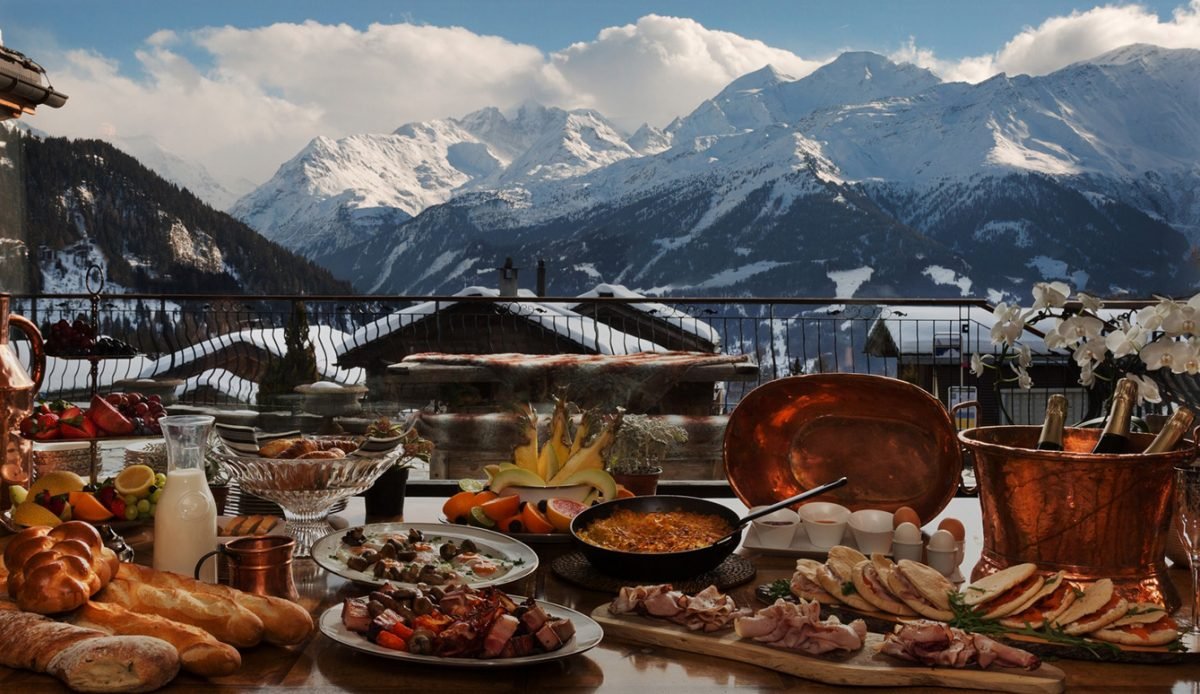A Taste of Tradition

Nestled amidst snow-draped peaks and quaint villages, the Alpine region comes alive in January with a rich tapestry of culinary traditions. Winter in the Alps is more than a season; it’s a celebration of warmth, sustenance, and the enduring spirit of mountain communities. At the heart of this season are dishes deeply rooted in history, designed to combat the biting cold and nourish the body after a day in the elements. From Switzerland to Austria, and Italy to France, let’s explore the most iconic foods that define January in the Alps.
Fondue: A Swiss Icon
Few dishes evoke the spirit of Alpine winter quite like fondue. Originating in Switzerland, this communal dish of melted cheese—traditionally Gruyère and Emmental—served with chunks of bread has become synonymous with cozy winter evenings. The origins of fondue trace back to Swiss peasants who relied on melted cheese and stale bread to create a hearty, affordable meal. Today, it’s a gastronomic experience, often paired with crisp white wines like Fendant or Chasselas.
Raclette: Melted Comfort
Another Swiss masterpiece, Raclette is both a dish and a cultural ritual. Named after the semi-hard cheese used in its preparation, Raclette involves melting the cheese and scraping it over boiled potatoes, pickles, and cured meats. Traditionally cooked over an open fire, modern interpretations use electric grills, making it a favorite for family gatherings and ski lodge dinners.
Tiroler Gröstl: Austria’s Hearty Classic
From the Austrian Tyrol region comes Tiroler Gröstl, a rustic dish of pan-fried potatoes, onions, and leftover meats such as bacon or ham. Topped with a fried egg, it’s a testament to Alpine frugality, transforming simple ingredients into a soul-warming meal. Often enjoyed after a day on the slopes, it’s paired with a glass of locally brewed beer or herbal schnapps.
Polenta Taragna: Northern Italy’s Winter Gem
In the Italian Alps, Polenta Taragna reigns supreme during the winter months. Made from a blend of cornmeal and buckwheat flour, this creamy dish is enriched with melted cheeses like Bitto or Valtellina Casera. Served alongside braised meats or wild game, Polenta Taragna reflects the Italian mastery of combining simple, high-quality ingredients for maximum flavor.
Tartiflette: France’s Decadent Delight
Hailing from the French Savoie region, Tartiflette is the epitome of Alpine indulgence. This oven-baked dish combines potatoes, onions, lardons, and Reblochon cheese into a creamy, bubbling masterpiece. Tartiflette’s origins lie in the marketing efforts of Reblochon producers, but its rich flavors and hearty composition have made it a winter staple across France.
Kaiserschmarrn: A Sweet Austrian Tradition
For those with a sweet tooth, Kaiserschmarrn is a must-try. This shredded pancake, caramelized to perfection and dusted with powdered sugar, is served with fruit compotes, such as plum or apple. Said to have been a favorite of Emperor Franz Joseph, this dish is both a dessert and a light meal, often enjoyed in ski huts with a mug of mulled wine.
Bündner Gerstensuppe: Switzerland’s Barley Soup
A nod to the simplicity and sustenance of Alpine cuisine, Bündner Gerstensuppe is a hearty barley soup from the Swiss canton of Graubünden. Cooked with root vegetables, smoked bacon, and occasionally sausage, this dish is a favorite for combating January’s icy temperatures. Its wholesome ingredients and slow-cooked preparation make it a symbol of Alpine comfort.
Knödel: Dumplings of Comfort
Knödel, or dumplings, are a versatile staple across the Alpine region. Whether served as a side to rich stews or filled with ingredients like spinach, cheese, or apricots, they embody the resourcefulness of mountain cooking. In January, you’ll find hearty varieties like Speckknödel (bacon dumplings) accompanying bowls of broth or served with sauerkraut.
January in the Alps is a culinary journey steeped in tradition and shaped by the demands of mountain life. These iconic dishes—each with its unique story—offer more than sustenance; they provide a window into the rich culture and enduring spirit of Alpine communities. Whether you’re dining in a rustic chalet or a modern ski lodge, these foods are a reminder that in the heart of winter, warmth comes not just from fire but from the table.


















